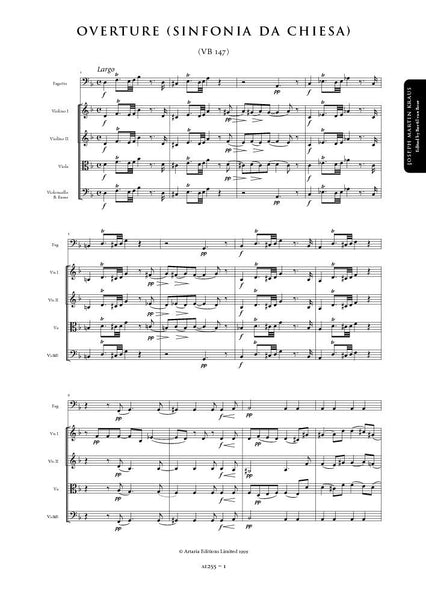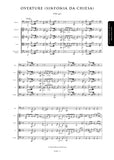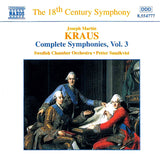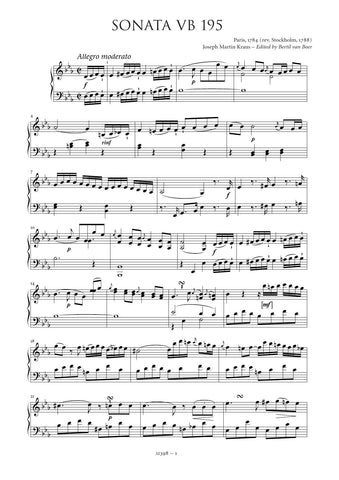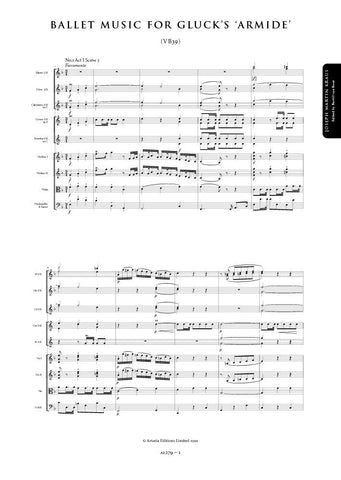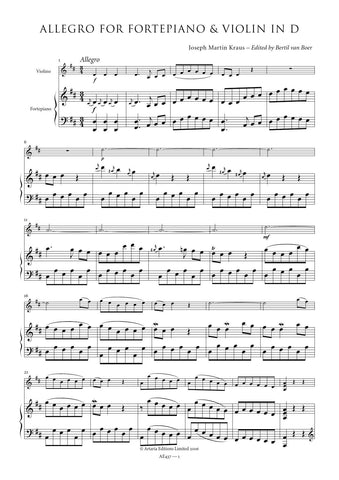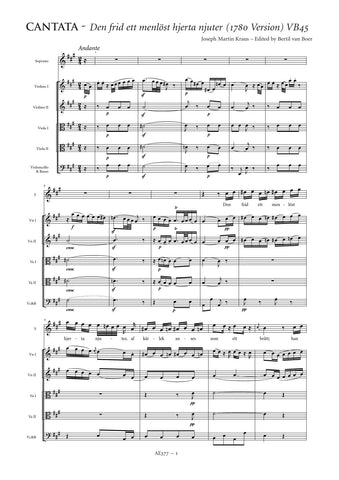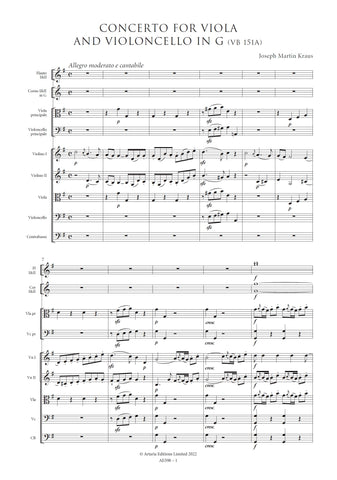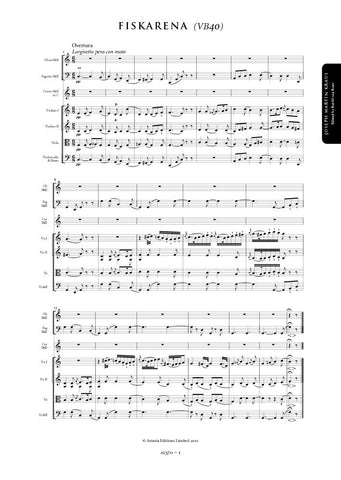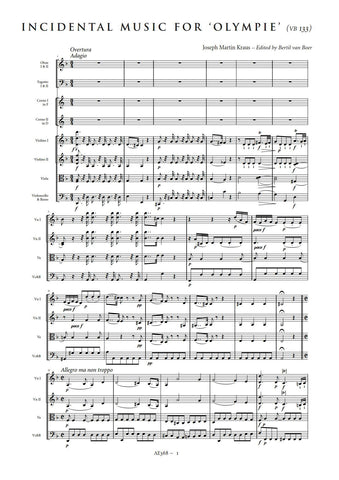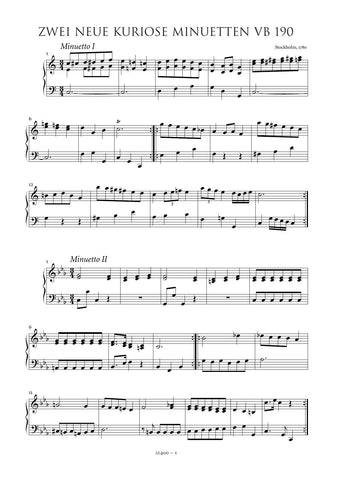Details
|
The Overture in D minor is an unusual and rather atypical symphonic work. It consists of an elaborate fugue that Kraus rearranged from the overture to Johann Georg Albrechtsberger's oratorio Die Pilgrime auf Golgotha, preceded by a brief, musically complex Largo, replete with dramatic unisons, mournful suspensions, and a short fugato. This introduction was later reused by Kraus for the Funeral Cantata for Gustav III (1792). In form and structure this makes the work an example of the sinfonia da chiesa, a designation that its subsequent performance history supports. Although the autograph is not dated, watermark evidence shows that it was written about 1790. Kraus scholar Fredrik Silverstolpe did not include it among his collection of Kraus's music, but in his biography of 1833 he noted that the work was a perennial favorite at the Good Friday services at the Storkyrka, the main church in Stockholm, long after the composer's death. It is therefore reasonable to propose that this was the original purpose of the work and that it was premiered during Holy Week of 1790. On 11 December 1804, Albrechtsberger wrote to Silverstolpe, stating that he was the author of the fugue and that he had given an autograph copy of the piece to Kraus during the latter's visit to Vienna in 1783. His gift has survived (Stockholm, Royal Academy of Music Od:Sv-R I:1) and shows that Kraus had already begun to sketch an alternative conclusion, possibly as early as this date.
This edition is based upon Kraus's complete autograph, now at the Royal Opera Library in Stockholm loosely inserted into the official score of the Funeral Cantata for Gustav III (Signature Kyrkomusik 38). The holograph is in the form of separate leaves and represents a final, complete draft form from which the official fair copy could be made. It is essentially complete, although there are several large corrections, including the addition of an extra bar towards the end of the first movement. The fugue deviates from Albrechtsberger's original by being expanded in terms of tempo and note values (from 4/4 to Common Time). Kraus's original revised ending to the piece, consisting of eleven added bars, has likewise been expanded to double its previous length. This edition was compared with two authentic fair copies, the official set of parts (KO/Sv-R) in the hand of the official copyist Friedrich Ficker and a score (KO/Sv-R I:1) by Kraus's friend and pupil Per Frigel. According to Silverstolpe the sparse scoring of the original—a bassoon and strings—was subject to elaboration following the composer's death. A copy now in the Royal Library (S. 221) by singer Kristoffer Karsten adds a pair of clarinets, and a particella tucked in with the original autograph expands the orchestration to include flutes, oboes, four horns, trumpets and timpani, which Silverstolpe lamented destroyed the delicate, intimate nature of the work. These additions have not been included in this edition.
The autograph sketch is remarkably detailed in terms of dynamics, articulation, and ornaments. This edition has modernised the notation, including the removal of redundant accidentals. Missing slurs that are clearly indicated in other parts as well as accidentals and dynamics have been tacitly added. Kraus's autograph, however, has three places where the composer distinctly wishes for special instrumentational effects that run contrary to expected articulation. In bar 43 the bassoon has a slur over the last three eighthnotes of the motive in contrast to the wedges in the other parts. In the final bar of the first movement, the first and second violins have half notes, in contrast to the whole notes in the other instruments. And in bars 174-177 the second violins and violas are lacking the cadential slurs expected and indeed found in the parts only a bar later. All of these appear to be deliberate on the part of the composer and have been left intact in this edition. Although there is no indication in the original for participation of the bassoon in the second movement, the authentic parts demonstrate that it was to play colla parte with the bass line; this performance practice has been retained in this edition.
Bertil van Boer
|




